
AT&T
AT&Ts “the first truly modern media company” and has been “changing the way people live, work and play for the past 145 years”.
AT&T has foundations in mathematical and statistical research. This includes the development of the S language for data analysis, that forms the core of the user interface in R. AT&T researchers brought many examples of new interactive graphics for data analysis, such as linking between plots and brushing in scatterplot matrices.
The research group has a long history of supporting and collaborating with academics. As a world leading innovator in the communications, media and entertainment industries, AAT&T encounters unique challenges (and opportunities), such as those inherent in the scale of data across the organisation’s distinctive and substantial business units. These challenges necessitate robust and scalable solutions, which the partnership with ACEMS can help to develop.
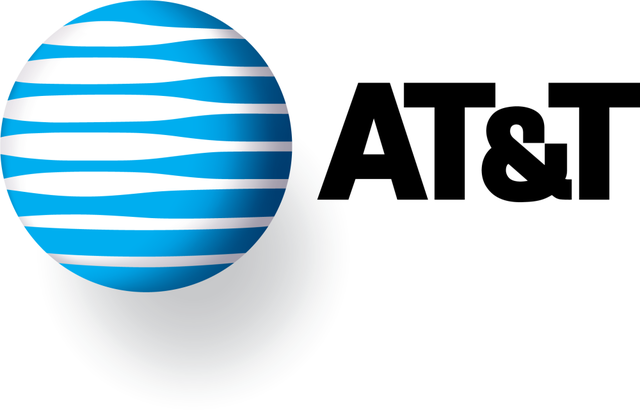
2020 Highlights
2020 was a year of renewed engagement and collaboration with AT&T. Highlights include:
- A visit to multiple ACEMS nodes and external collaborators by an AT&T Principal Inventive Scientist collaborator, supported by the ACEMS ICSS scheme
- An estimated AUD$30,919 in-kind contribution from AT&T representing their contribution to engagement and collaboration with ACEMS
- Research collaboration, with significant research activities, outputs, including R code, a shiny app, tools, and articles, including in The Conversation
- Co-supervision of an honours research student who has graduated and will commence a PhD
- ACEMS 2020 Virtual Annual Retreat presentation of ICSS research
- Community and stakeholder engagement based on research, including the ARDC
- Important research outcomes, and impact, realised for both AT&T and the wider community, including in relation to bushfires and informing the national response thereto
Also see the Case Study ‘Using data to determine bush fire ignitions and predict causes’
ICSS Project “Visual tools to investigate relationships in multivariate spatiotemporal data with a focus on emergency call data
ACEMS AI Dianne Cook, and CIs Rob Hyndman and Kerrie Mengersen commenced an ICSS scheme grant (awarded in 2019) to support the above project with AT&T.
Emergency call data, like records collected at AT&T, contain measurements on geographic location of call initiation (as triangulated from broadcast and receiver sensors), and end (public safety answering point, PSAP), time, call quality, length. Metadata such as weather can be joined with the call data. This project will develop interactive data visualisation tools, to enable a user to examine the relationship between these sources of information and assess the variability in response due to different factors.
The ICSS supported a visit by AT&T’s Principal Inventive Scientist Emily Dodwell (AT&T New York) to Australia, initial outputs from collaborative research on visual tools to support analysis of spatiotemporal emergency call data included: solutions; R code; and a shiny app, with further outputs (including tools & publication) proposed.
Proposed future research mobilisation opportunities include a “Natural Disaster & Emergency Resilience” research & ideas symposium, featuring other ACEMS research & attracting practitioners/end-users.
In 2020, our collaboration also realised benefits beyond AT&T, including the development of research talent, R community activities, and for bushfire/emergency management in Australia ”
Emily Dodwell, AT&T
Emily Dodwell’s Visit to ACEMS in Australia
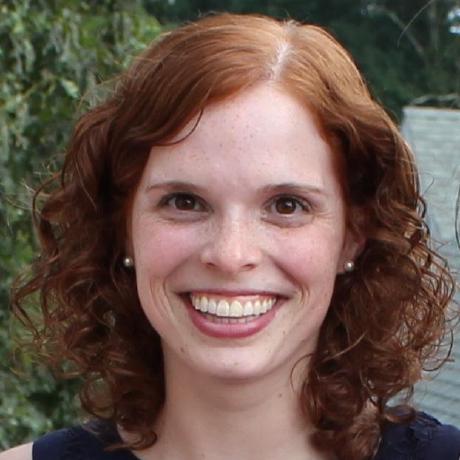
Emily Dodwell, AT&T
Emily Dodwell is a Principal Inventive Scientist in the Data Science and AI Research organization at AT&T Labs in New York City, where she currently focuses on predictive modelling for advertising applications, the creation of interactive tools for data analysis and visualization, and research concerning ethics and fairness in machine learning. Emily is an R enthusiast committed to promoting gender diversity in the community, and she is an organizer of R-Ladies New York City and a member of R Forwards, the R Foundation task force on women and other underrepresented groups.
Emily Dodwell came to Australia in late February-early March and spent her first two weeks in Victoria, hosted by ACEMS Monash node, during which time she: worked on collaborative research with ACEMS’ Professor Dianne Cook; networked with ACEMS members in Victoria; participated in a Monash-hosted ‘R’ hackathon with fellow R enthusiasts; and extended the formal collaboration between AT&T and ACEMS Monash.
In Queensland, Emily was hosted at ACEMS QUT for three days, during which time she: delivered a research seminar on “Iterative Research in Practice at AT&T Labs”, attended meet and greet sessions with ACEMS members and meetings with key potential collaborators; visited Queensland Fire and Emergency Services, meeting with Data Scientist and former ACEMS researcher Miles McBain, to discuss data and research; met with ACEMS stakeholder engagement coordinators; was a guest at HDR student-hosted lunches with PhD students; and explored ACEMS facilities and STEM-research inspired games.
Co-supervision of ACEMS Research Student
Emily Dodwell co-supervised ACEMS Monash Honours research student Weihao (Patrick) Li whose thesis looks at spatio-temporal visualisation and analysis of bushfire data (in place of private emergency call data) following the disastrous 2019/2020 Australian bushfires. Weihao has since successfully completed his honours degree and intends to commence a PhD at ACEMS Monash node in 2021.

ACEMS AI Dianne Cook and Emily during exploring statistics in sports at the cricket during Emily’s visit to Victoria
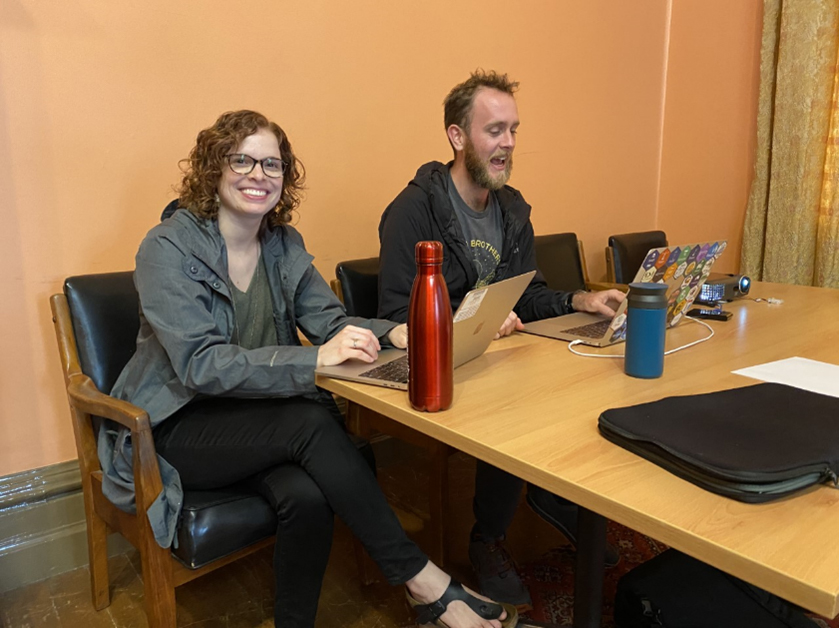
Emily pictured with ACEMS AI Nick Tierney at an R hackathon hosted by Monash
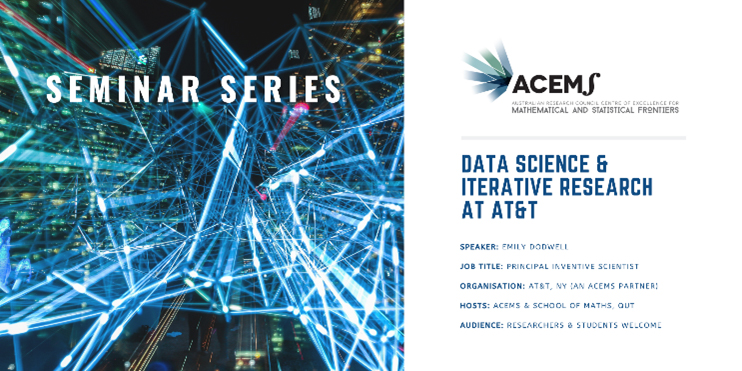
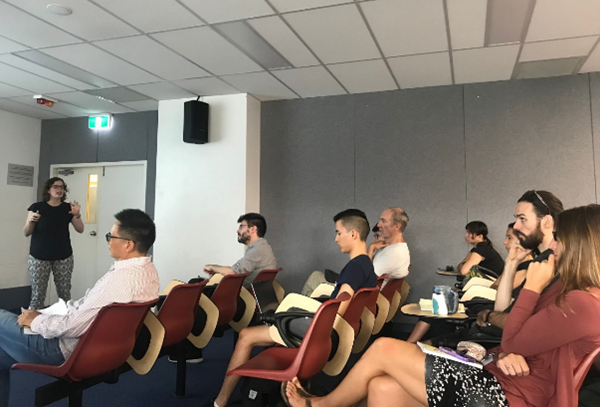
Emily’s presentation delivered at ACEMS QUT node.
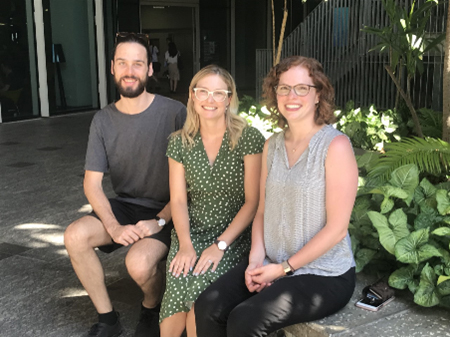
Emily with ACEMS PhD students Joshua Bon and Jacinta Holloway Brown
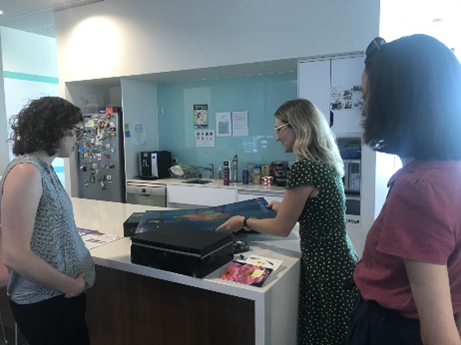
Emily with Jacinta Holloway Brown and Grace Heron at ACEMS QUT with STEM-research inspired Sats and Stats boardgame

Emily exploring “The Cube” at ACEMS QUT
ACEMS 2020 Virtual Annual Retreat
Emily Dodwell also attended ACEMS 2020 Virtual Annual Retreat in November, which featured a presentation by ACEMS Professor Dianne Cook on their collaborative/co-supervision work, entitled “Using Remote Sensing Data to Understand Fire Ignition during the 2019-2020 Australia Bushfire Season”.

ACEMS Retreat ICSS AT&T Presentation
ARDC Bushfire Challenge
An important engagement affording knowledge transfer from the ACEMS-AT&T research, to benefit Australia’s response to bushfires, was afforded by ACEMS Professor Dianne Cook, amongst six other ACEMS members, attending the ARDC’s Bushfire Challenge Workshops in December 2020.
The Australian Research Data Commons (ARDC) has since published a report from these workshops, noting key research priority areas to improve Australia’s bushfire management, and identifying high impact areas where establishing data infrastructure can address data challenges and technological barriers.
Going forward, the ARDC will discuss the report and align with identified priorities of national bodies, including ACEMS PO CSIRO and IAM BOM, amongst others, and invite our researchers, and others to participate in the next stages towards development of proposals and funded projects.
Informing Academic & Public Discussion on the Causes of Bushfires
The collaborative research on the causes of bushfires was presented in a range of academic, public, and practitioner forums/media, including by Emily Dodwell in a presentation entitled “Visualisation of multivariate spatiotemporal data in R” at the virtual R Conference New York and in an article by Di Cook in The Conversation entitled “Open data shows lighting, not arson, was the likely cause of most Victorian bushfires last summer”.
The publication of The Conversation article followed much public debate, claims, and disagreement, as to the main causes of the Victorian bushfires as exemplified by a competing hashtags on Twitter: “#ClimateEmergency” vs. “#ArsonEmergency) stimulating significant discussion by members of the public.
The reported research and data analysis indicated, consistent with the claims of firefighters, that the majority of fires, namely 82%, can be attributed to lightning, with the remaining 14% to accidents, 1% to burning off, and only 4% attributed to arson (contrary to certain misinformation widely shared in the public domain).
Opportunities for 2021
ACEMS and AT&T look forward to continuing their collaboration in 2021 and realising an impact for and beyond AT&T from this work, including in relation to bushfire and emergency management.